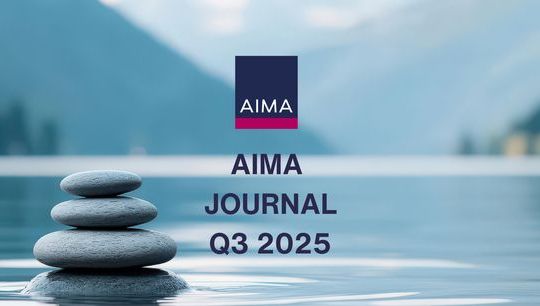CEO Blog: Five facts for the Fourth Estate
By Jack Inglis, CEO, AIMA
Published: 27 May 2016
Hardly a day goes by, it seems, without a hostile piece of commentary about the alternative investment industry appearing in the press. Sometimes this is related to a political story, or a hedge fund redemption (you will see markedly less coverage about new allocations), while in recent weeks, there has been particularly close attention paid to performance and fees, such as this column in the Financial Times today or this in The Times of London at the weekend. Not all the coverage is negative; the FT’s hedge fund correspondent Lindsay Fortado wrote a thoughtful piece about hedge fund activism earlier this week. But there is no denying the trend.
If I may offer five facts to counter some of this criticism –
1. Hedge funds are not a homogenous club. This is an extremely diverse sector. What hedge funds as a whole all have in common is the use of short asset exposure (eg short selling), derivatives and leverage and the charging of performance-related fees. But they are not all alike, and there is no such thing as an average hedge fund, in the same way that no two people are alike. Some perform better than others in any given year. In 2015, the average return was only up by a net 2.4% (I say ‘only’, but this was better than stocks and bonds) - but the top decile returned 27% after fees. Equity market neutral / quant funds returned 10.4% after fees. Long/short equity funds were up 6.8% after fees. And on a risk-adjusted basis – a measure of the riskiness of fund performance – hedge funds as a whole did even better.
2. Many more pensions invest in hedge funds today. According to Preqin, the number of public pensions in the US who allocate to hedge funds has grown from 234 in 2010 to 282 in 2016 – an increase of about 20%. The average share of the portfolio which pensions allocate to hedge funds has grown to almost 10%. This very fair and balanced piece by Christine Williamson of Pensions & Investments has more detail on this.
3. The long-term case for hedge funds is still very convincing. Hedge funds have significantly outperformed all other major investment types over the past 25 years, net of fees, and have done so with less than half the volatility and risk of the equity markets. Institutional investors tell us that they remain committed to their hedge fund allocations. This has come out time and again in recent surveys which ask whether expectations are being met and whether allocations will be held or raised in the coming years. In the private wealth sector we are also seeing that commitment.
4. Alignment of interest between fund managers and investors is growing. Readers may have seen this white paper last week by SCM Direct into fees paid to hedge funds by UK pensions. While we support greater transparency around fees, SCM’s report did not help its particular cause by exaggerating the fees that were paid last year. But more importantly, the report focused only on the (inflated) costs and failed to acknowledge the various benefits that hedge funds bring to institutional investors. Pension funds, foundations and endowments continue to include hedge funds in their portfolios because they want to diversify, dampen volatility and preserve capital, and because they are seeking consistent, risk-adjusted returns that meet or exceed their expectations. Investors’ and fund managers’ interests are aligned, so that, for example, performance fees are not paid if the fund is below its high watermark, while discounts, clawbacks and spreading of fee payments are increasingly common, as a shortly-to-be-published survey of AIMA members has found.
5. Too much is made of individual redemptions. In Q1, there was a net outflow of $15bn from the hedge fund sector. That amounts to 0.5% of the total sector. In April, the NYCERS trustees in New York voted to liquidate the pension’s $1.5bn hedge fund portfolio in a seemingly politically motivated decision (several of the underlying funds had very decent performance). That is 0.05% of the sector. And yet – and I haven’t measured this, admittedly – it felt like those two isolated pieces of news garnered about 90% of the media coverage of the industry during April. Outflows from equity and bond mutual funds over the same period were much greater. Moreover, other data sources showed that hedge funds saw net inflows this year so we should be careful making judgements on a single figure. And even if we accept that Q1 data point, the last four quarters combined are still showing a net inflow, while the hedge fund industry as a whole has grown at roughly 10% a year since the financial crisis.
A hedge fund manager told me the other day that defending hedge funds currently felt a bit like “shouting into a hurricane”. It can sometimes feel that way, and this may be one of those moments. But we believe in the value proposition of hedge funds, we believe that investors receive substantial benefits from investing in to our industry, and we will continue to make that case with passion, pride and confidence.
Jack Inglis
CEO






